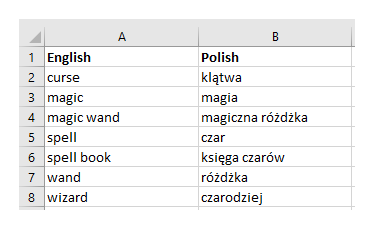Glossaries
Learn the benefits of using glossaries in your localization process.
Consistency
Glossaries are the easiest way to improve the consistency of translated text. Different translators (or even the same translator at different times) can translate the same term in various ways. Giving them a glossary of approved translations will make their translations more consistent.
Non-translatable text
Glossaries can also specify text that should not be translated, such as brand names.
Forbidden terms
If you don't want a given term to be translated in a particular way, a glossary is also a good place to specify that.
For example, the word "pacemaker" can be translated into Polish as "rozrusznik," but you may want translators to use the less colloquial "stymulator" instead.
Definitions and context
Glossaries can also provide a definition for each term, as well as context (such as subject domain or sample use).
Format
You can develop a glossary in a spreadsheet editor. Simply prepare a list of terms with their translations and optionally other details, such as definitions.
Once you finish, export your glossary as a CSV file. Translators can then import the file into their CAT tool.

Glossaries (called term bases) can also be developed directly in a CAT tool. Most CAT tools have their own term base format, but you can use a universal format called TermBase eXchange (TBX) to move term bases between different tools.